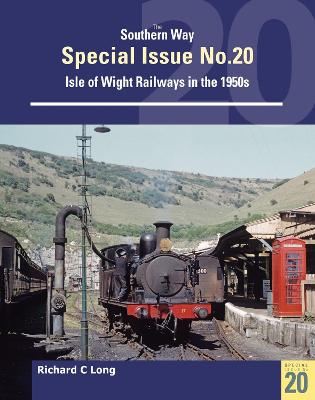Home > All Titles > November New Releases > Southern Way Special Issue No. 20: Isle of Wight Railways in the 1950s

Viewed from over seven decades later the Isle of Wight at the start of the 1950s might at first glance appear to have been experiencing a golden age of railways. A real-life Island of Sodor where Victorian steam locomotives crisscrossed the Island from Cowes in the north to Ventnor in the south, and from Freshwater in the west to Bembridge in the east. Even the smallest of villages could claim its own station and the only cloud on the horizon was generated by the passing of a nearby train. Or was it? The truth of course was rather different. From as early as 1950 – over a decade before Beeching – rumours abounded that the entire network might be at risk of closure. In the event the loss of the Ventnor West branch in 1952 would be the first of several routes to be axed over the next few years, with around two thirds of the Island’s network having closed by the end of the decade. Further closures would of course follow in the 1960s. In the meantime, the pages of the Isle of Wight County Press abounded with proposals for how the Island’s antiquated railways could be saved, revitalised and modernized – all of them doomed to failure and one so bizarre it was described as like ‘something from H. G. Wells.’ In this book, the author provides an overview of the Isle of Wight’s railways during the 1950s. Were the closures inevitable and what were the arguments for and against? This fascinating survey of the Isle of Wight’s railways in their post war heyday contains around 130 photographs, many of them previously unpublished.